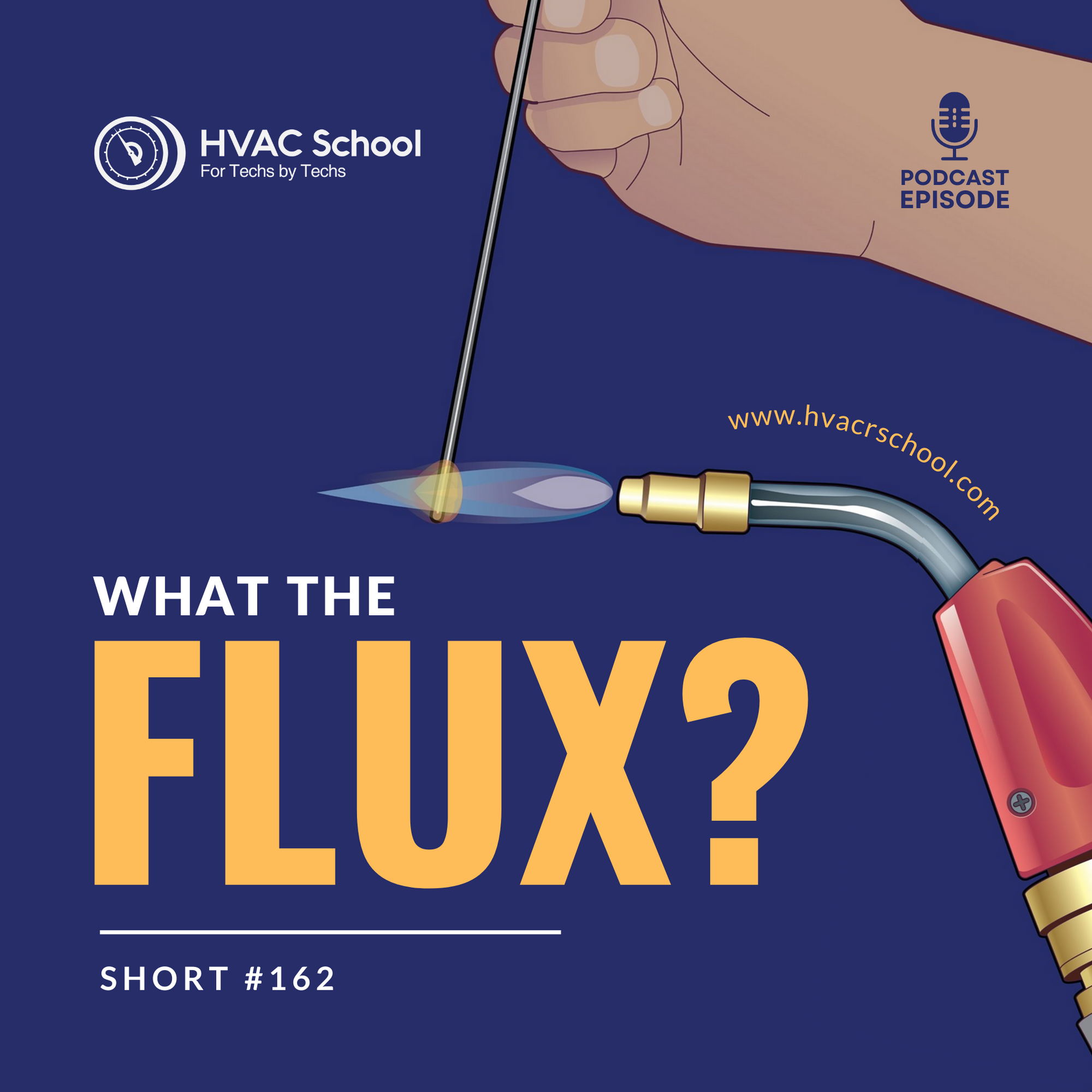What the Flux? – Short #162

This is the episode for you if you've ever asked, “What the flux?” In this short podcast, Bryan explains the basics of flux in soldering and brazing, as well as magnetism.
Flux means “flow.” In HVAC, “flux” may have two meanings. It may refer to the substance that helps the molten alloy flow and bond to base metals more effectively when you're soldering or brazing. However, flux may also refer to magnetic flux, which is the lines of force that emanate from a magnet; this concept is important in inductive loads like transformers.
In soldering, brazing, and welding, flux is a powder-paste or liquid that you apply to the base metal. You usually apply it directly to the male side of the base metal, or it may be embedded in the brazing alloy. Flux prevents oxides (like rust or the black flakes, cupric oxide) from forming on the surface you're brazing, which commonly happens at higher temperatures. Flux helps you create a proper bond, but it doesn't eliminate the need to clean the base metal before brazing.
You typically don't need flux when you use silver-phosphorus or phosphorus-copper brazing rods for copper-to-copper brazing; the phosphorus acts as a fluxing agent, and using flux may increase the risk of contamination. It's also important to remove the flux from the metal after brazing because it may cause pitting; you may use a brush and/or a wet rag.
Flux is useful when you use rods with high silver content or when you have other base metals; the appropriate flux will depend on the base metal, especially if you're soldering aluminum.
Learn more about the HVACR Training Symposium or buy a virtual ticket today at https://hvacrschool.com/symposium.
If you have an iPhone, subscribe to the podcast HERE, and if you have an Android phone, subscribe HERE.
Check out our handy calculators HERE.








Comments
To leave a comment, you need to log in.
Log In